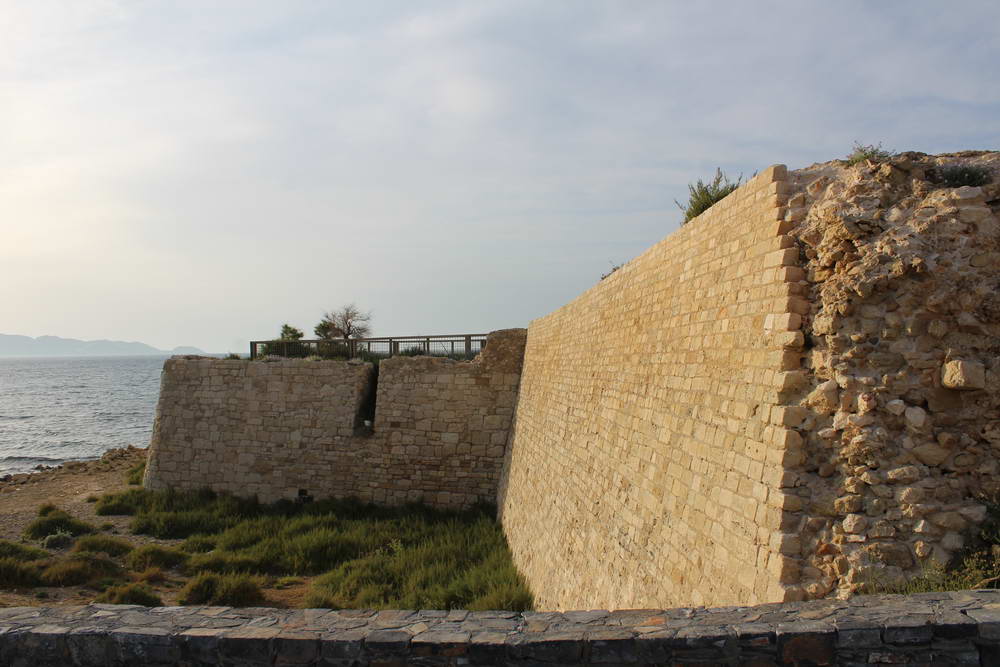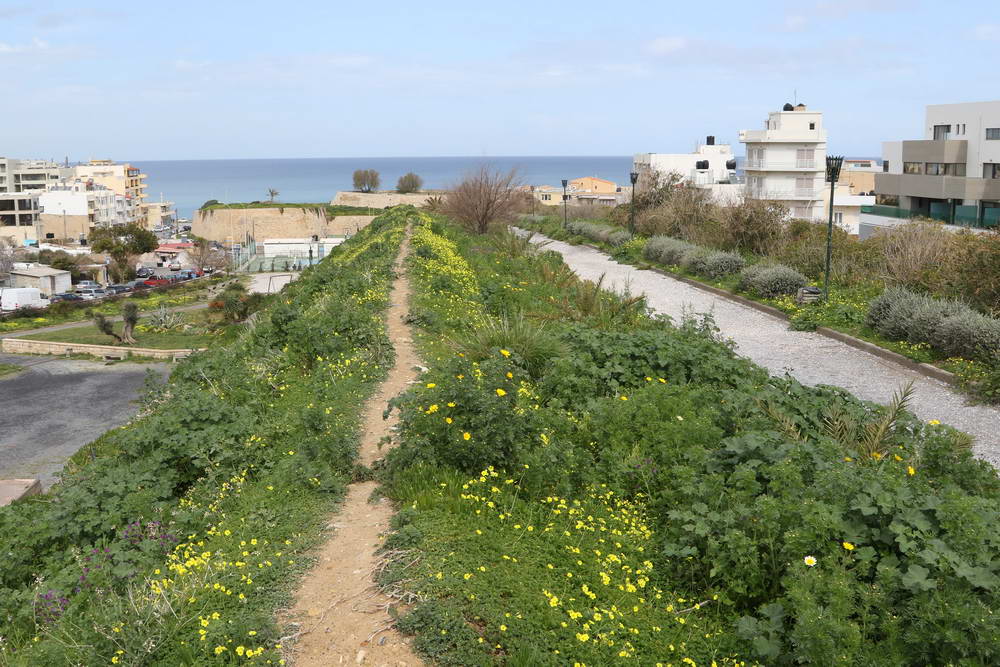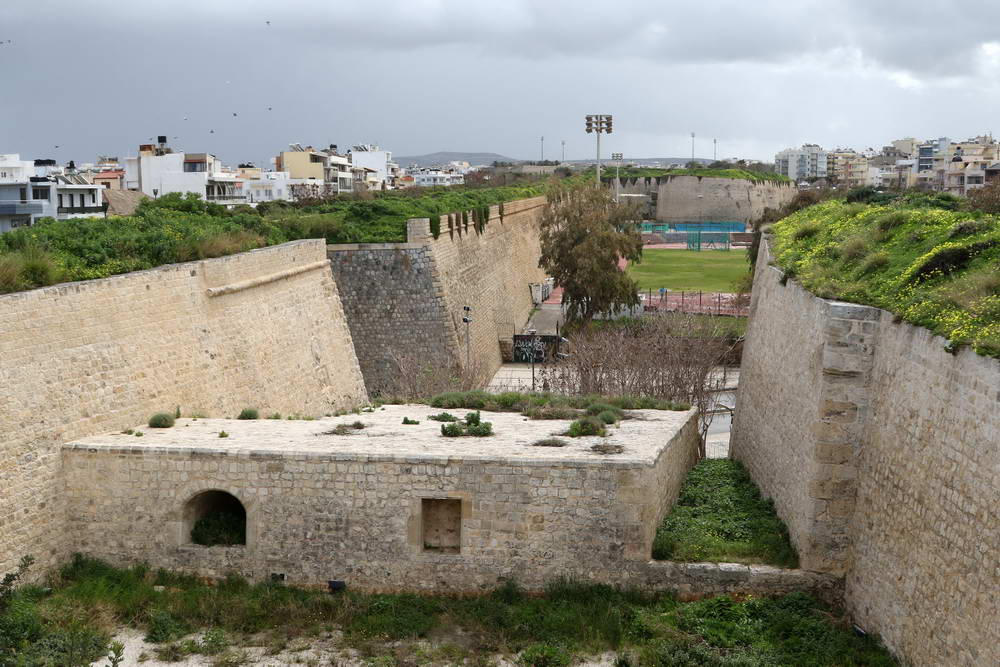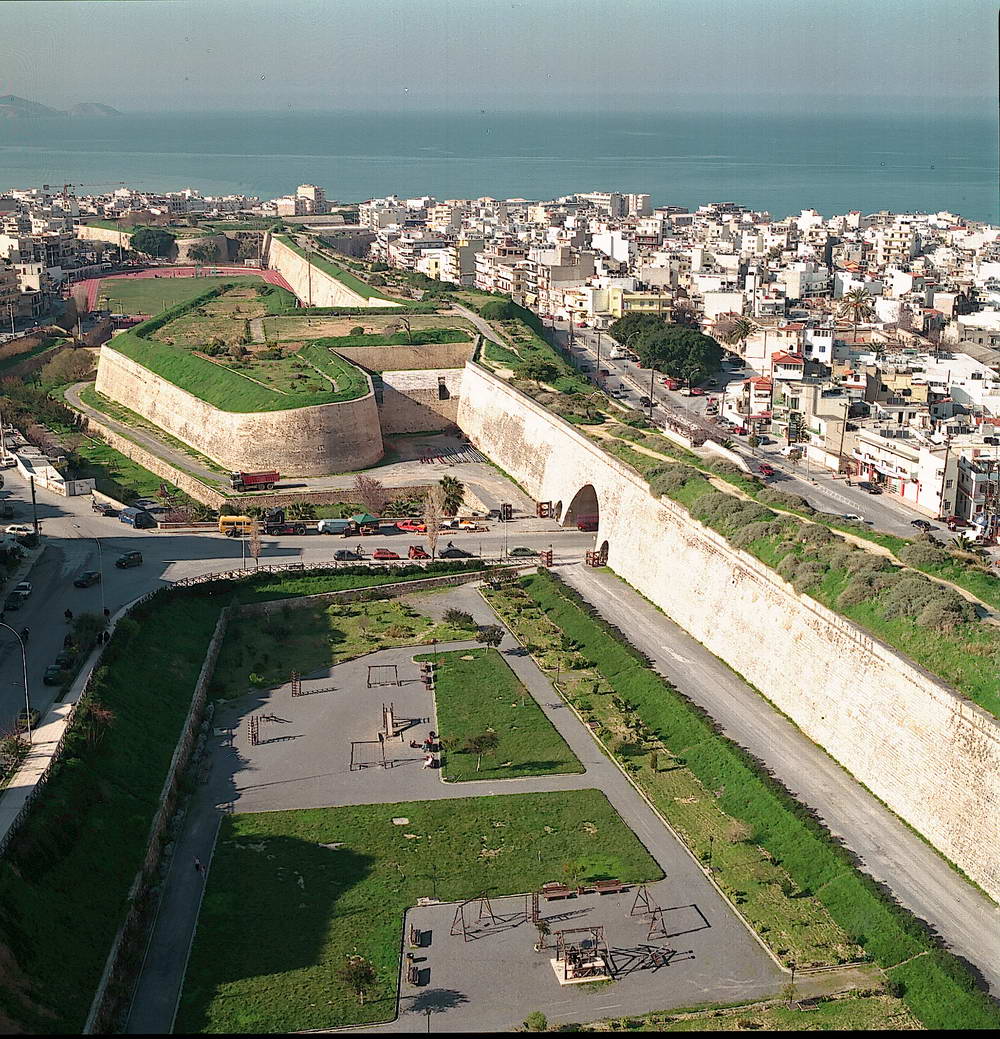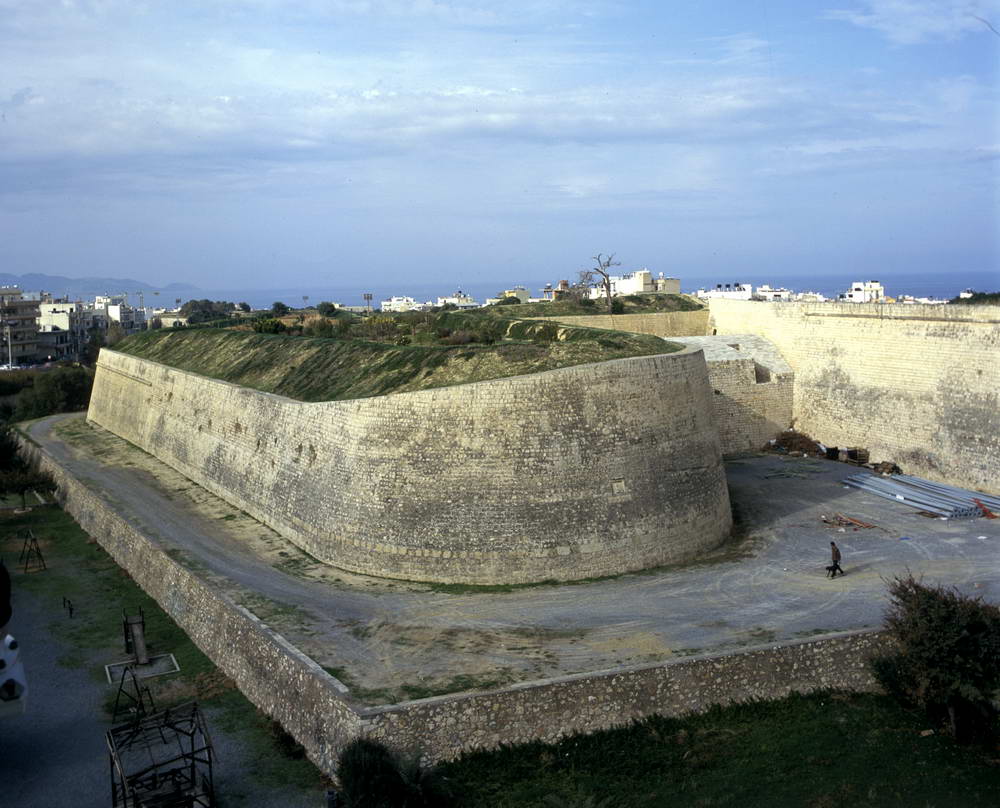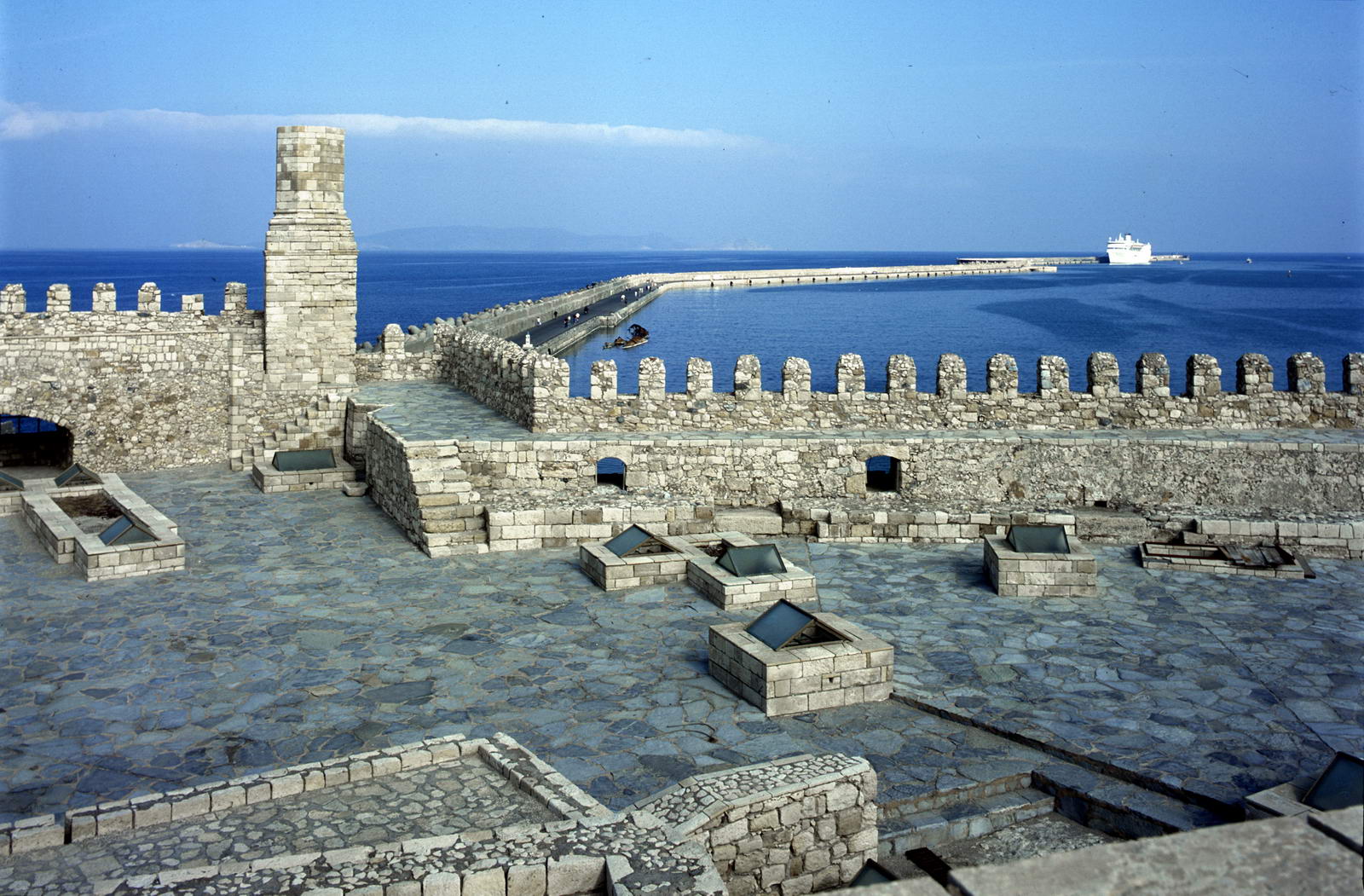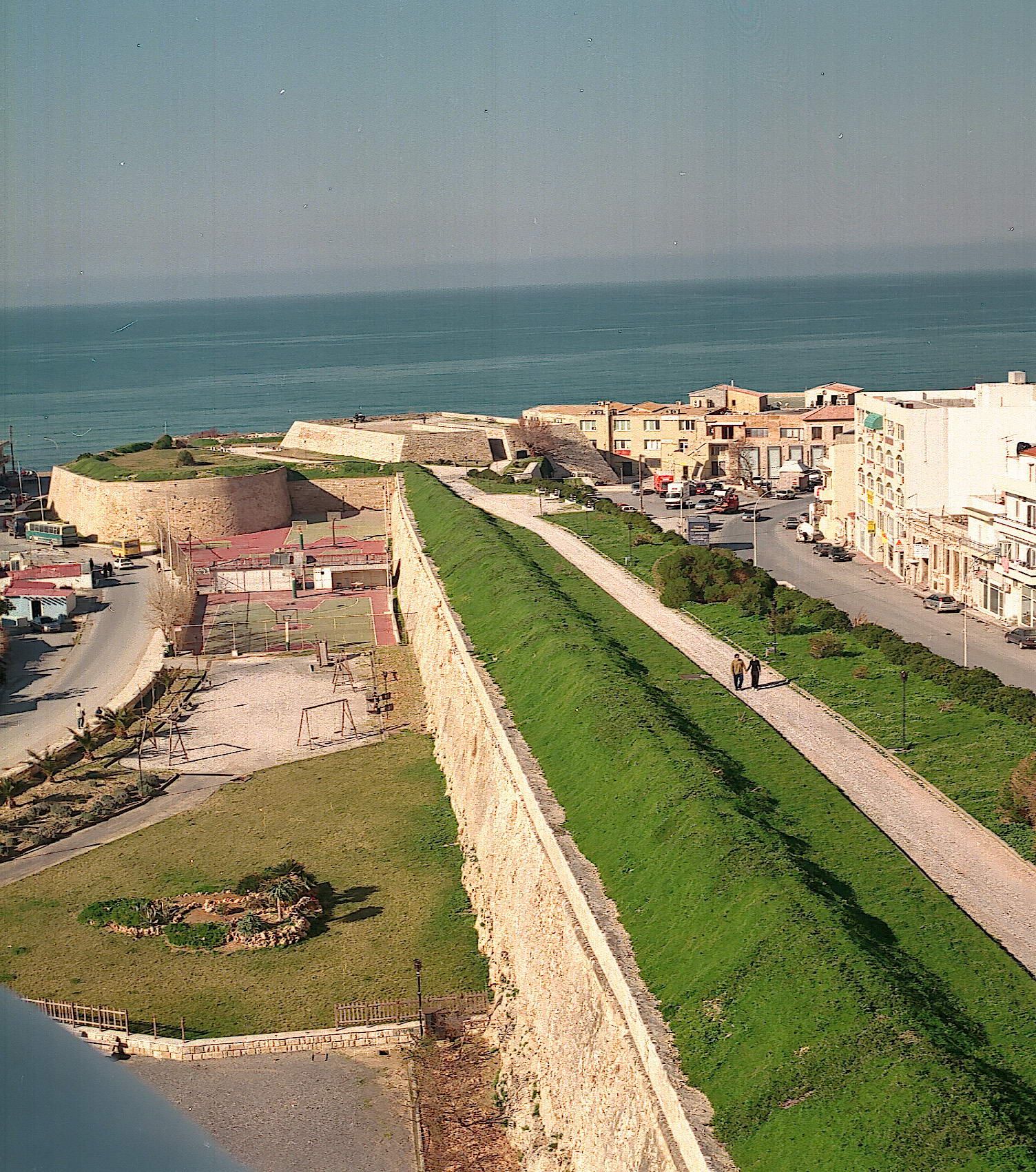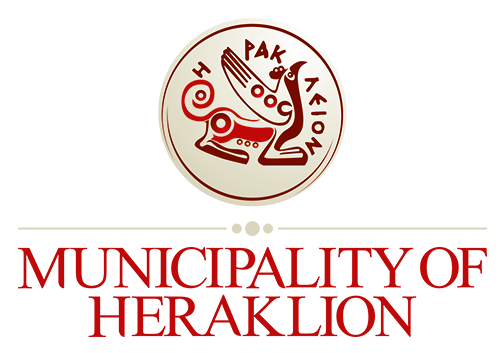Heraklion, with the historical name “Chandax”, a coastal city in a location of strategic importance for the trade transactions and war conflicts of past years, could not but have a strong fortification.
The walls, as well as the name of the city, changed several times over the years along with its rulers, Byzantines, Arabs, Venetians and Ottomans.
During the Venetian rule, a new defense system “with bastions” was invented, most of the work of which took place in the second half of the 16th century. The additional fort walls comprised twelve bastions where strong firearms had been placed.
Defenders reached these outer walls (curtain walls) through underground galleries that started from the moat around the fortress.
The outer bastion of St. Dimitrios, located east of the fort walls and opposite the Vitturi bastion, is the only fortification which remains intact until present time. All other outer bastions have been destroyed and nowadays only their trace exists being the present block.
The moat around fortress walls has always been a constituent part of them designed to hinder enemies from invading the fortress and keep them away. Before the implementation of the bastion system, the moat was filled with water, making it more difficult to approach the fortress main guard. In the case of Chandax, the fortification enclosure was surrounded by a dry moat.
The new fort walls of Candia (name of the city during the Venetian rule) comprised seven bastions, and gates were opened to allow entrance to the city.
There were gates exclusively for military use, some public/ urban gates leading from the city to the countryside and the sea, and some secondary ones.
Today, there is still a number of gates standing tall, embedded in the urban fabric of modern Heraklion, to remind the wandering people of the turbulent and fascinating history of the city.






